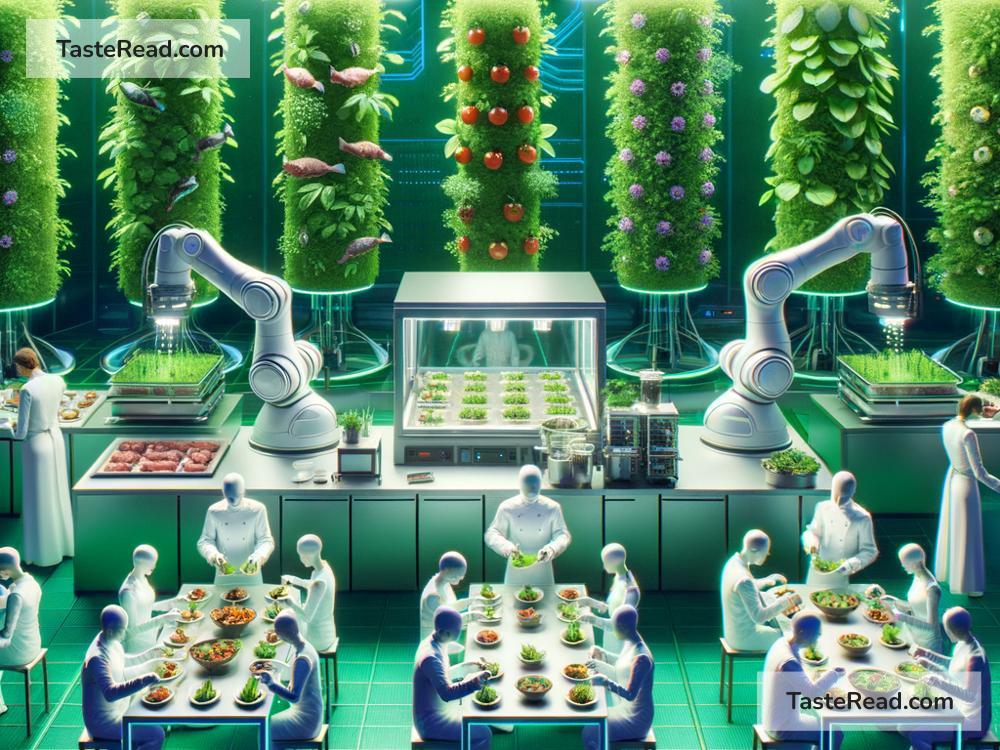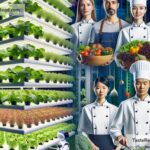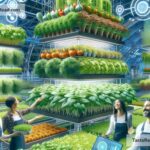The Future of Food and Regenerative Global Innovation: Building a Healthier Planet
What will food look like in the future? As the population grows and the planet faces challenges like climate change, deforestation, and soil degradation, the way we produce and consume food must evolve. The good news? We’re entering an exciting era of regenerative global innovation—new technologies and ideas aimed at not just sustaining the planet, but restoring and improving it.
Let’s explore how the future of food could change to help us address global issues, and why regenerative practices could be the key to a better world.
The Growing Challenges of Feeding the World
By 2050, Earth’s population is expected to grow to nearly 10 billion people. Feeding this many people is no small task. Right now, food production puts huge pressure on natural resources. Agriculture uses about 70% of the world’s freshwater. We’re also losing fertile soil faster than it regenerates, thanks to over-farming, deforestation, and pollution. In addition, traditional farming systems emit large amounts of greenhouse gases, further contributing to climate change.
If we don’t shift how we grow food, these challenges will only get worse. That’s why scientists, farmers, and innovators around the globe are working on new solutions to make food systems sustainable—and even regenerative.
What Is Regenerative Agriculture?
Regenerative agriculture is an approach to farming that goes beyond sustainability. Instead of simply trying to avoid damaging the environment, it focuses on healing the Earth. Regenerative practices aim to improve soil health, increase biodiversity, and restore ecosystems.
For example, some farmers are planting a mix of crops together (instead of growing a single crop on large plots of land). This improves soil fertility, reduces pests naturally, and helps trap carbon from the atmosphere. Other regenerative strategies include rotating crops, minimizing chemical fertilizers, and using grazing animals in a way that nourishes the soil.
The result? Farms that are healthier, greener, and more productive over the long term. Regenerative farming doesn’t just feed people—it makes the planet stronger.
The Role of Technology in Food Innovation
Technology is playing a huge role in shaping the future of food. Advancements like artificial intelligence (AI), vertical farming, lab-grown proteins, and precision agriculture can help create food systems that are smarter and more sustainable. Here are a few ways innovation is transforming the food industry:
1. Smart Farms
Imagine a farm where sensors monitor soil moisture, temperature, and nutrients—sending data to computers that tell farmers exactly how much water or fertilizer to use. This is called precision agriculture, and it’s already reducing waste and increasing efficiency in many parts of the world.
2. Vertical Farming
Instead of growing food across massive fields, vertical farming grows crops stacked in indoor towers. Using LED lights and hydroponic (water-based) systems, vertical farming requires much less land and water while producing fresh food year-round. It’s perfect for urban areas that don’t have much farming space.
3. Lab-Grown Proteins
You’ve probably heard of plant-based burgers, but lab-grown meat takes innovation a step further. Scientists can now grow real meat in labs using animal cells—without raising or slaughtering animals. This technology could drastically reduce the environmental impacts of traditional livestock farming.
4. Food Waste Solutions
Did you know that up to one-third of all food is wasted globally? Innovations like AI-powered inventory management systems and apps that connect leftover food to people in need could help reduce waste and make sure more food gets to the table.
Local Solutions with Global Impacts
While technology can provide exciting solutions, the future of food will also depend on local, people-centered approaches. Around the world, communities are rediscovering traditional knowledge and combining it with new practices. For example:
-
Indigenous Farming Practices: Indigenous communities have centuries-old techniques for conserving natural resources and producing food sustainably. These methods—like agroforestry (planting crops alongside trees)—are being adopted globally to improve farming systems.
-
Community Gardens and Urban Farming: Cities are turning empty lots and rooftops into thriving gardens, giving people access to fresh food and a deeper connection to nature.
By supporting local farmers and embracing cultural knowledge, food systems can become healthier, more diverse, and better equipped to address global challenges.
Making Food Accessible for Everyone
The future of food isn’t just about how we grow it—it’s also about ensuring everyone has enough to eat. Today, millions of people around the world suffer from hunger, even though we produce enough food to feed everyone. To fix this, governments, nonprofits, and businesses are working together to create fairer food distribution systems.
One promising solution is “regenerative economics.” This idea focuses on building economic systems that lift people out of poverty, promote equality, and protect the environment. If we can align economic policies with sustainable farming, feeding the planet could become much more achievable.
A Bright Future for Food and the Planet
The way we produce and consume food is critical to the health of our planet. By embracing regenerative agriculture, using smart technology, and working together globally, we have the tools to create food systems that nourish people and restore the Earth.
The future of food isn’t just about solving problems—it’s about creating opportunities. Imagine a world where farmers grow food and improve the planet at the same time. Imagine a world where everyone has access to nutritious meals, and waste is a thing of the past. That future is possible, and every step we take toward innovation brings us closer.
As consumers, we also play an important role. Choosing local, sustainable, and regenerative options whenever possible supports this shift. Together, we can help build a food system that’s better for the planet, better for communities, and better for the generations to come.
Ultimately, the future of food is about creating harmony between people and nature—and it’s an exciting journey worth exploring.


